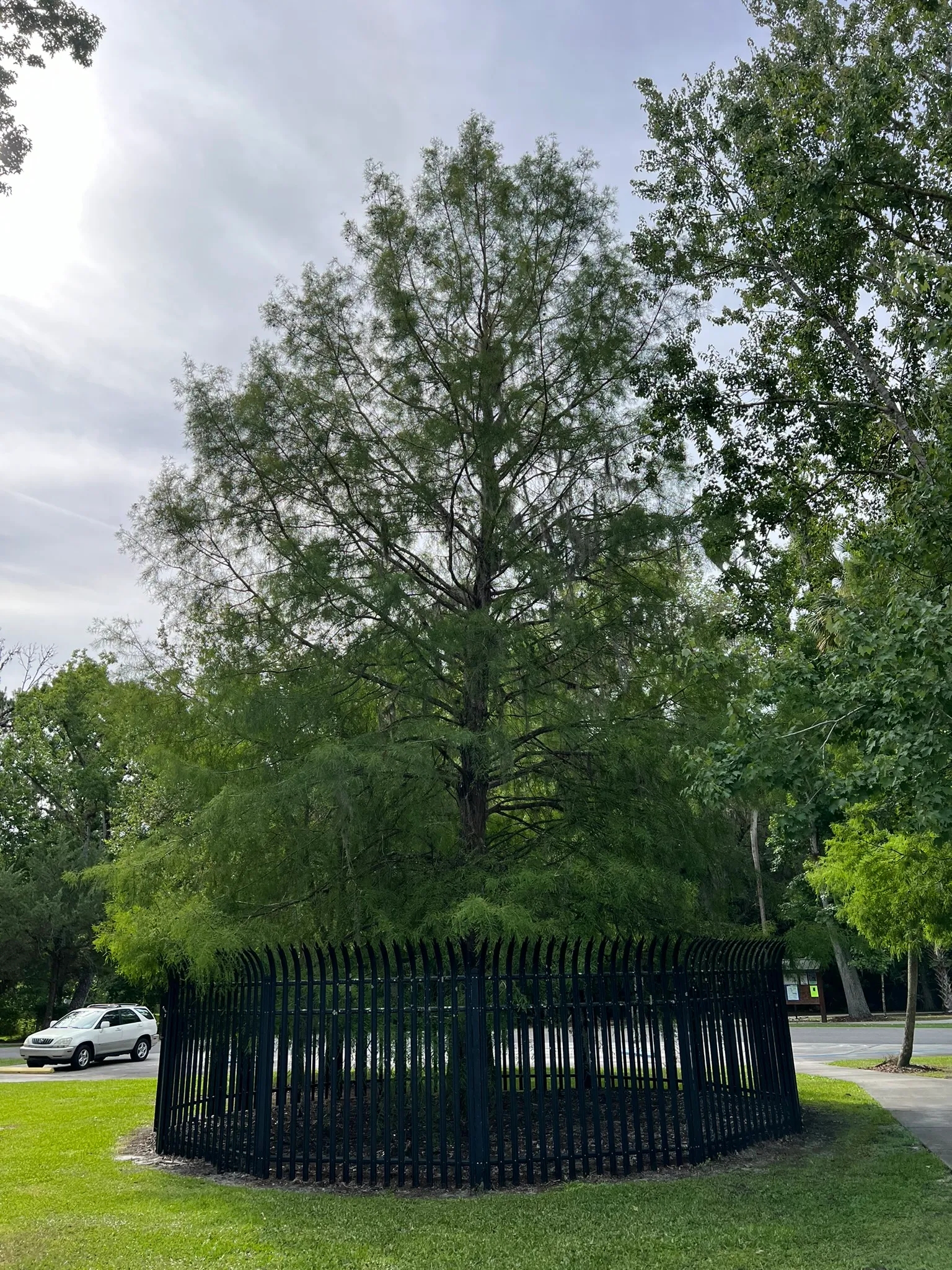Discover the Stunning Flatwood Plum: A Native Beauty with Billowy Spring Blooms
The Flatwood Plum (Prunus umbellata) is a round-topped, deciduous tree native to the southeastern United States, prized for its spectacular display of white, billowy spring flowers that appear before the leaves. Reaching a moderate size, it makes an excellent specimen or small street tree, particularly suitable for planting beneath power lines. Following the profuse blooms, it produces small, edible purple fruits that vary in flavor from tart to sweet and are attractive to wildlife. While it may look a bit ragged in winter, its stunning floral display in late February and early March makes it a worthwhile addition to native gardens and landscapes seeking spring beauty.
Sizes Available
Wholesale Only
1 Gallon
$4.00
3 Gallon
$8.00
A Flatwood Plum tree in full bloom, its branches adorned with a profusion of delicate white flowers, with a vibrant Red Admiral butterfly gracefully perched on one of the blooms.
Scientific Name: Prunus umbellata
Common Name: Flatwoods Plum, Hog Plum
Hardiness Zones: 8 through 9
Height: 12 to 20 feet
Spread: 12 to 20 feet
Growth Rate: Medium
Foliage: Spring & Summer: Finely serrate green leaves appear after the early spring blooms, typically less than 2 inches long. Fall: Turns yellow, though the fall color is not considered particularly showy.
Bark: Not particularly showy; requires pruning to maintain clearance if trained as a street tree.
Sun: Full sun to part shade is suitable for the Flatwood Plum.
Soil: Adaptable to a variety of soils including clay, loam, and sand; tolerates slightly alkaline to acidic conditions and prefers well-drained soil.
Wildlife Value: The edible purple fruits are very attractive to various forms of wildlife, including birds and squirrels. The flowers are also pollinated by bees.
Why Choose Flatwood Plum?
Spectacular White Spring Flowers:
The Flatwood Plum is most often planted for its breathtaking display of profuse, small, white flower clusters that appear in late February and early March before the leaves emerge, giving the tree a billowy, cloud-like appearance and announcing the arrival of spring.
Edible Purple Fruit Attractive to Wildlife:
Following the beautiful blooms, this native plum produces small, edible purple fruits that, while varying in flavor, are enjoyed by both humans (best for jelly) and various forms of wildlife, making it a beneficial addition to gardens aimed at supporting local ecosystems.
Adaptable to Various Soil Types and Sizes:
The Flatwood Plum thrives in a wide variety of soils and remains a relatively small tree, making it a versatile option for different landscape sizes and soil conditions. Its size is particularly advantageous for planting under power lines or in smaller urban spaces.
Native Beauty for Specimen or Street Tree Use:
As a native tree, the Flatwood Plum is well-suited to the southeastern United States and makes a lovely specimen tree prized for its early spring flowers. With proper training and pruning, it can also be used as an attractive small street or parking lot tree.
Environmental Benefits of Planting Flatwood Plum
This data is based on US Averages of healthy and mature trees over a 20-year period.
Check out the USDA’s MyTree Tool to input your custom location data.

CO2 Offset
A single flatwood plum can offset the CO₂ emissions produced by driving an average gas-powered car for 5,800 miles.

Water Filtration
A single flatwood plum can absorb enough stormwater to fill 441 bathtubs, reducing erosion, runoff, and supporting transpiration.

Removes Air Pollution
A single flatwood plum removes as much air pollution as the weight of 54 smartphones.
Featured Projects
Central Florida Lands and Timber Nursery, LLC. is a wholesale nursery specializing in a wide array of Florida native trees. With an inventory of over 2 million container-grown trees, CFLTN, LCC can meet the needs of large-scale reforestation, mitigation, and landscaping projects throughout the Southeast region.
Phone
(386) 294-1211
Address
3087 North County Road 53 Mayo, Florida 32066








